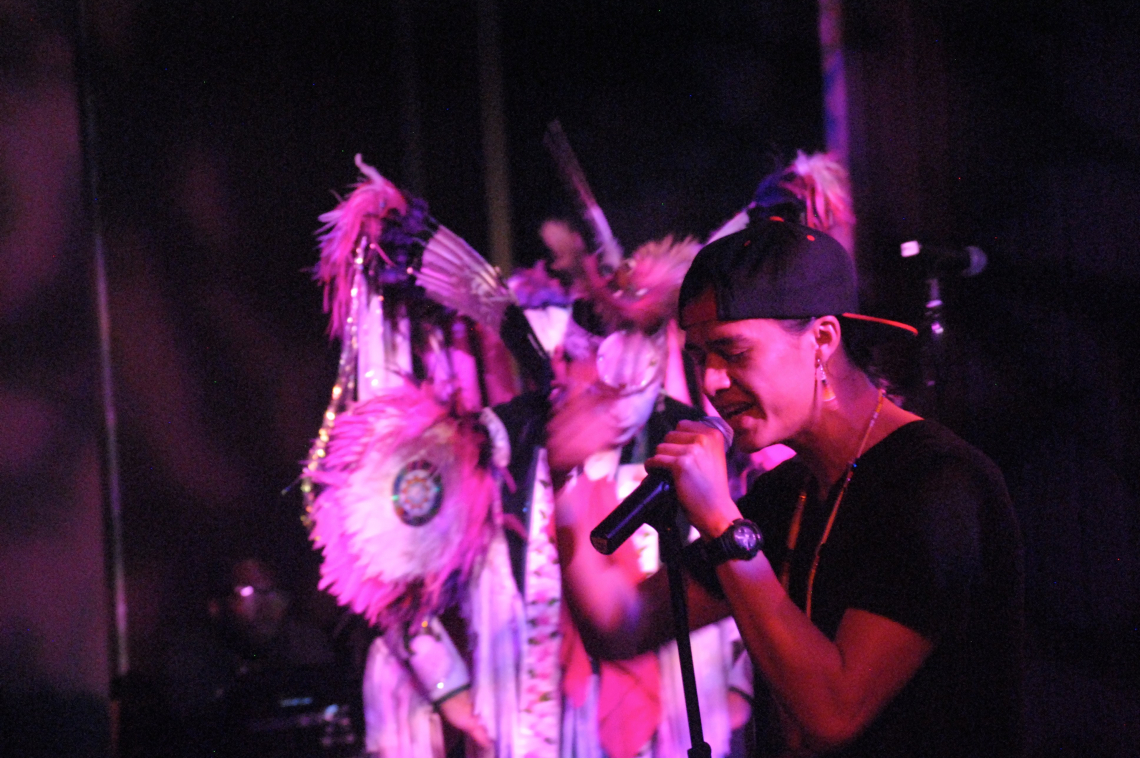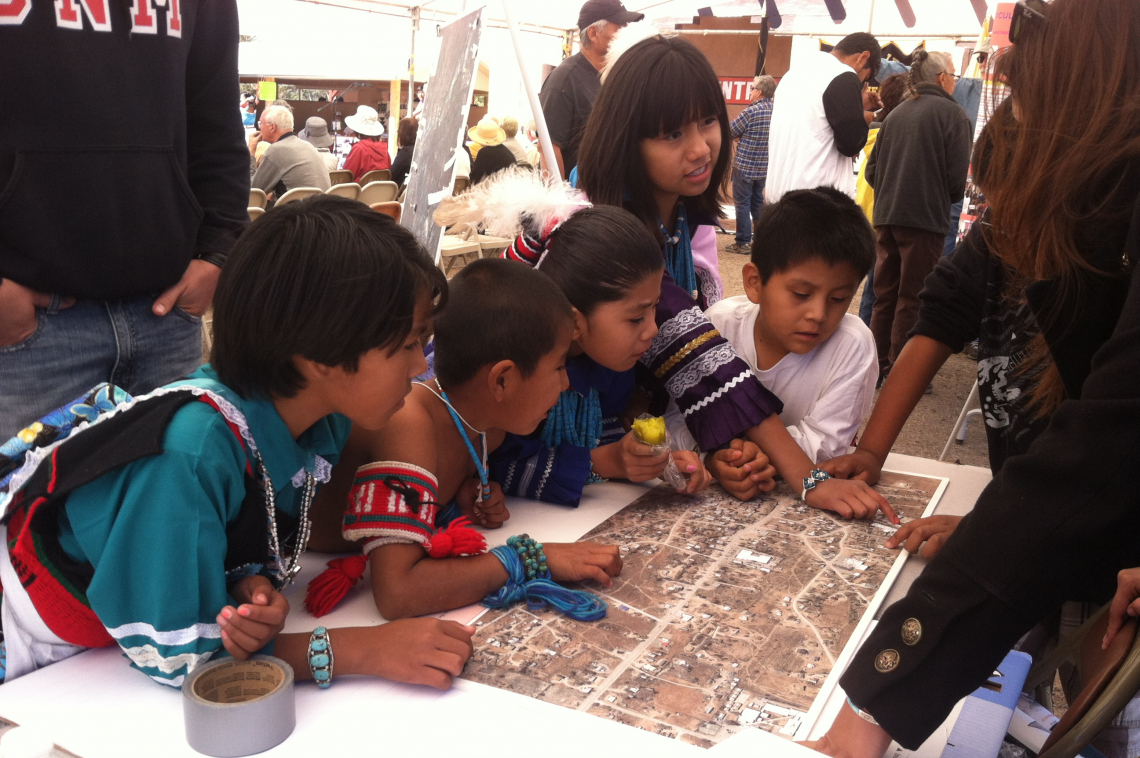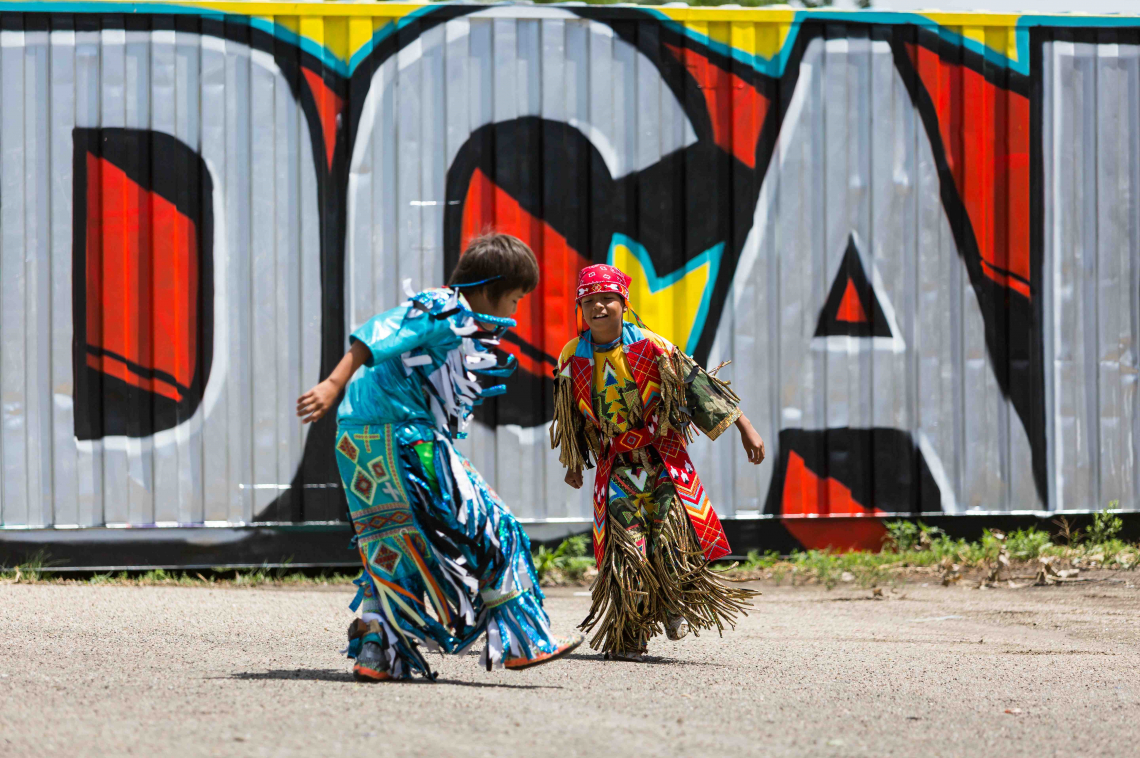


We asked a few of our favorite organizations who work with Native American and Indigenous communities to share the creative placemaking opportunities, funding sources, and events they’re most excited about right now.
First Peoples Fund (FPF) honors and supports the Collective Spirit® of First Peoples artists and culture bearers. Recognizing the power of art and culture to bring about positive change in Native communities, FPF awards grants, helps nonprofits build their capacity to serve Native artists, and undertakes research to build the field of Native arts and culture across the country.
On September 27, FPF will break ground on the Oglala Lakota Artspace, an 8,500-square-foot facility dedicated to nurturing and developing the creative economy on the Pine Ridge reservation in South Dakota. The space is a partnership between FPF, Lakota Funds, and Artspace, and will house artist studios, a recording and film studio, a computer lab, a storefront for the Lakota Federal Credit Union, and spaces for art classes, business trainings, and community arts and artist gatherings. The building is slated to open in late 2019 or early 2020. To stay in the loop about staffing and programming in the space, opening celebration events, etc, subscribe to FPF’s newsletter, watch their events calendar, and follow them on social media: find all on this page.
September 30 is the deadline to apply for the 2019 First Peoples Fund Artist in Business Leadership and Cultural Capital Fellowships. These year-long fellowships include a $5,000 grant, business training, technical support, and a convening with fellow selected artists. If you have questions about the application, call (605) 348-0324 or email info [at] firstpeoplesfund.org.
***
Indigenous Design + Planning Institute (iD+Pi) at the University of New Mexico engages faculty, students, professionals, and policy leaders in culturally appropriate design and planning practices to foster sustainable communities within Indigenous populations—communities guided by principles of social justice and distinguished by healthy environments, strong local economies, and thriving cultures. iD+Pi works with the three major programs in UNM’s School of Architecture and Planning, and with Indigenous tribes who are located principally in New Mexico and the Southwest.
From iD+Pi Director Theodore Jojola:
“The understated asset to placemaking is partnering with your regional Tribal Community Colleges and Universities (TCUs). These minority-serving institutions were created by Congressional Act in 1978. They are controlled and operated by American Indian tribes and serve local communities in the pursuit of post-secondary educational needs as well as serving as a pipeline to public universities. Today there are 38.
“iD+Pi has been building partnerships with several of them including a major consortium, the American Indian College Fund. In April of this year, we jointly presented at the invitation of their SEEDs (Scholarly Emergence for Environmental Design & Stewardship) program a webinar entitled The People are Beautiful Already [based on Jojola’s eponymous essay].
“In addition, we are proposing to partner with ArtPlace America to build a network of ArtPlace grantees that serve Indigenous groups. They represent 23 projects with a combined grant total of $14.6 million. An organizing meeting was held at the ArtPlace 2018 Annual Summit. Through this network, we want to have them build partnerships with their local TCUs and enlist their faculty and students in comparable endeavors.”
For more information, mshirl01 [at] unm.edu (contact iD+Pi Program Specialist Michaela Shirley).
***
Cheyenne River Youth Project (CRYP) provides the youth of South Dakota’s Cheyenne River reservation with access to a vibrant and secure future through culturally sensitive programs, projects, and facilities that promote strength and self-sufficiency.
CRYP’s Waniyetu Wowapi (Winter Count) Lakota Youth Arts and Culture Institute launched in September 2016 as an evolution of its existing arts programming. The Institute incorporates the free, public Waniyetu Wowapi Art Park and Art Walk (which broke ground in 2014); the annual RedCan invitational graffiti jam (launched in summer 2015); and an extensive teen internship program.
The five-acre Art Park is a safe, legal, outdoor space where young people from the community are encouraged to express themselves through visual art. The park welcomes visitors year round to walk among the ever-changing canvases, or take a seat on a bench and reflect on the artwork. Its close proximity to Cheyenne River Elderly Nutrition Services encourages multiple generations to enjoy the space together.
The public is also invited to attend RedCan, which takes place in the Art Park and at large-scale mural sites across the city of Eagle Butte. RedCan frames graffiti as an art form, and connects the street art world with the Indigenous world. When Lakota artists collaborate with renowned street artists from across the country, they infuse graffiti with their own culture, identities, and stories, providing meaningful, lasting inspiration to both participants and viewers. CRYP also invites visitors to take a mural tour of Eagle Butte. The organization’s main office in the Cokata Wiconi (Center of Life) teen center provides free information.
Area teens can apply for a rigorous CRYP internship in Sustainable Agriculture, Social Enterprises, Native Wellness, or Art. The organization’s public-facing enterprises—the farm-to-table Keya Cafe, which features produce from their organic, two-acre Winyan Toka Win Garden; the Keya Gift Shop; and the seasonal farmers market—serve as living classrooms for the interns. CRYP also offers Native Food Sovereignty workshops and classes to the public.
***
More resources:
- Native American Creative Placemaking: This report by The Housing Assistance Council begins with the premise that “placemaking was always known to Native Americans.” The report offers a first-of-its-kind interactive map of Native American creative placemaking projects, and examines a selection of them in depth. It also notes funding sources and emphasizes that placemaking “offers Native people an opportunity to reconnect with their traditional ways of life”—an antidote to injustices including forced assimilation, trauma in boarding schools, and extreme poverty. The report encourages tribal leaders to establish a voice for Native Nations in placemaking efforts across the United States.
- Indigenous Placemaking Council (IPMC): This Tides Canada initiative seeks to restore Indigenous presence to Canadian communities by nurturing the evolution of a new generation of Indigenous placemaking practitioners who are shaping their environment to create inclusive, culturally appropriate, sustainable communities. Indigenous-owned businesses can join IPMC for free and gain access to opportunities to promote and work on IPMC-generated projects. Non-Indigenous businesses can apply to join the Canadian Council for Aboriginal Business’s Progressive Aboriginal Relations certification program. Anyone can subscribe to IPMC’s mailing list to stay informed about their projects and advocacy work, and get involved with local placemaking opportunities. Find more info on IPMC’s Membership page.
- Intercultural Leadership Institute (ILI): This year-long intensive leadership program for artists, culture bearers, and other arts professionals is a collaborative program of First Peoples Fund, Alternate ROOTS, the National Association of Latino Arts and Cultures, and PA’I Foundation. The effort grew out of their leaders’ observations that many personal and professional leadership programs emphasized dominant cultural norms, modes of learning, and social approaches that did not match their commitment to cultural equity and positive change-making in their communities. Learn more about applying for an ILI Fellowship.
April Greene is an established freelance writer and editor. To learn more about April please visit: aprilgreene.com.





